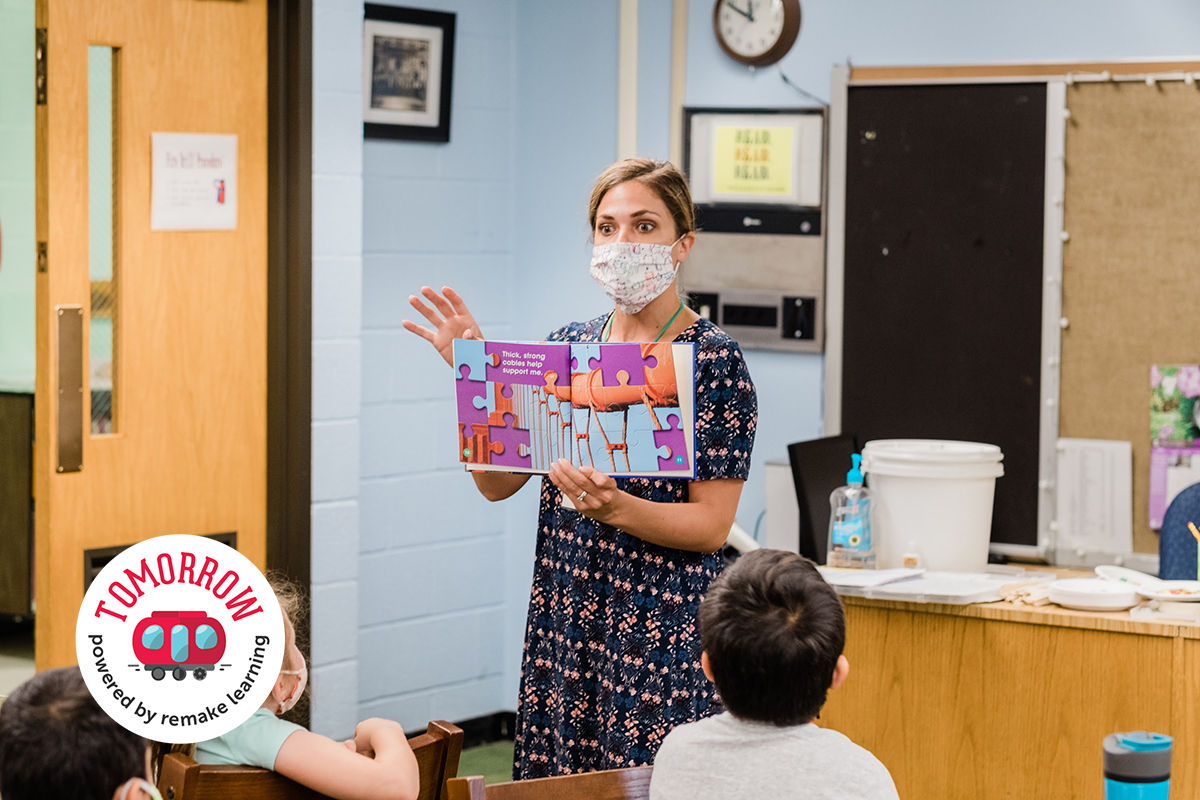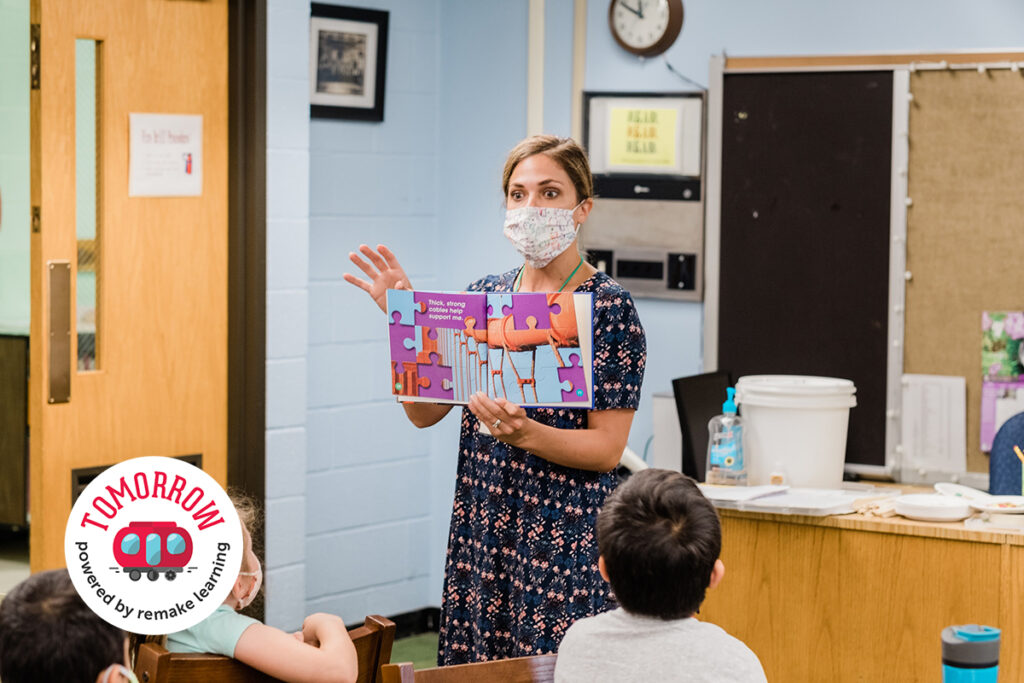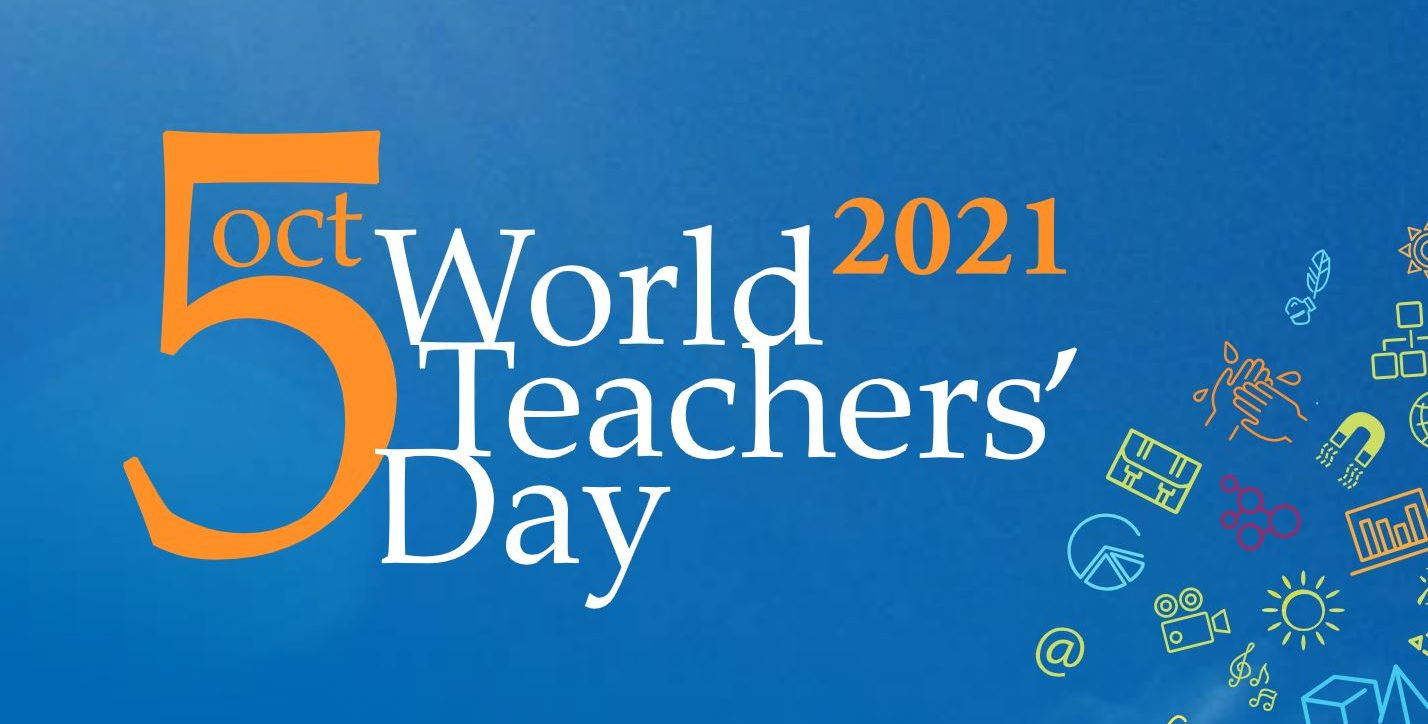After 18 months of pandemic-disrupted schooling, America’s teachers could probably use a holiday. Technically they got one yesterday, though most likely spent it the way they spend every weekday—working hard to help kids learn.
Tuesday, Oct. 5, was World Teachers’ Day. This international celebration was created by UNESCO in 1994. This year, UNESCO announced, it was all about “the support teachers need to fully contribute to the recovery process under the theme ‘Teachers at the heart of education recovery.’”
In western Pennsylvania, teachers are very much at the heart of recovering from and moving beyond the pandemic into a new era of learner-centered, innovative education. But getting there isn’t simple.
As teachers accomplish this challenging work, the Tomorrow campaign wondered: How has teacher professional development (simply called “PD” by many in the world of education) been changing and growing since the pandemic began?
How Are We Helping Teachers Build More Equitable, Just Classrooms?
Participants in last summer’s State of Black Learning conference were immersed in two days of powerful discussion about how schools can better support Black learners—and how schools in many communities are still failing at this responsibility.
But conference organizer K. Chase Patterson, CEO of Urban Academy Charter School, points out that the work of making sure all of our region’s students are fully supported goes well beyond what can be covered at a single gathering.
“We help folks as best we can, over the two days of the conference and sprinkled throughout the school years, to really break down their biases,” Patterson says, “and to unpack those obstacles or roadblocks that exist between them and ensuring that black students are centered in how they deliver their instruction or their student support on a daily basis.”
This annual gathering and the outreach that follows can help teachers grapple with questions like how to shift their teaching about historical figures like Christopher Columbus to bring in real authenticity and honesty. But for real change to take place in the way kids are taught, teacher PD must be reimagined from a perspective of equity and social justice.
Professional development is most often managed and implemented “by folks who have been in their roles for a long time,” Patterson says. “Imagine an assistant superintendent who has not been a classroom teacher or principal in 15 years, being responsible for professional development. The disconnect is so great.”
Often that disconnect is most great for Black students, “because more often than not, unfortunately, Black students are rarely at the center of any conversation that is positive and focused around disruption or change that would ultimately benefit their growth and their success.”
Another piece of progress we can make with teacher PD: Helping all teachers, including those in predominantly white districts, find learning resources that fully include the contributions and accomplishments of Black people.
“There are not an abundance of resources that exist that support infusion of Blackness or African American culture into the mainstream learning environment,” Patterson says. “It takes extra work for teachers and educators to assure that the work they’re doing is honest and that it is authentic, and therefore will have a positive impact on the lives of the students that they serve.”
Teacher PD that’s truly designed with an equity lens can help make sure that happens.
How Are We Helping Teachers Guide Their Own Professional Learning?
With help from a Moonshot grant, Cornell School District is bringing a flexible, learner-centered approach and a commitment to justice to the work of teacher PD. Cornell’s program, called Mapping Professional Learning Pathways for Educational Transformation, “really challenges that notion of one-size-fits all professional development,” says Kris Hupp, the district’s director of technology and instructional innovation.
Early in the pandemic, Cornell did what most districts did during lockdown, says Hupp: They focused PD mainly on technology. But as some amount of in-person learning returned, “we refocused on pedagogy—on what teachers can do to provide better learning opportunities or outcomes for their students.”
So they created an initial set of learning pathways that teachers could explore. But they didn’t stop there. The Cornell team met with their teachers to ask: Are we offering pathways you’re eager to follow? Is there something more we can include?
This learner-centered approach taps into the teacher’s personal desire to learn and ensures their valuable time isn’t being spent on professional development that doesn’t help them grow as educators.
The designers of the program are authentically listening to teachers. And they’ve created an advisory council that includes local education experts, as well as community members and even students.
In the months and years to come, “these pathways are going to be continuing,” Hupp says. “They’ll be changed and they’ll be refined.”

How Are We Helping Teachers Embrace Powerful Project-Based Learning?
With funding from a Tomorrow campaign grant, the Consortium for Public Education is partnering with Intermediate Unit 1 to help a group of 20 early-career teachers across southwestern Pennsylvania to grow their skills around project-based learning (PBL).
This work gives people who’ve been teaching for just two to four years a chance to test out and really grasp key PBL concepts in a low-stress way, to keep from overwhelming these early-career professionals. The program also draws a clear path to engaging with local businesses and community partners to apply PBL concepts to real-world problems that students can help solve.
“Our team has been working with those 20 people very intensely with true classroom kinds of activities,” says Mary Kay Babyak, the Consortium’s executive director. This training is all done virtually, so teachers can access it without leaving their school buildings.
The group is diving right in: They’ll be implementing pieces of this work with their own students this fall.
Babyak’s team has also been doing virtual training with school districts on more general PD topics. “Doing it virtually is a very different ballgame for us,” she says. Rather than spending just one in-person day with teachers, her team can introduce a topic during a virtual session, then circle back with the same people once they’ve had a chance to test their new knowledge with their students.
The Consortium also offers “virtual office hours,” so that teachers can get one-on-one support in very personalized ways.
How Are We Placing Relationships and Human Connection at the Heart of Teaching?
Last summer, the idea came quickly: After several successful years leading a program called Educators’ Neighborhood, the team at the Fred Rogers Center decided to pulled together a virtual symposium.
For two days in late July, they shared the many ways that Fred Rogers’ research, values and philosophy can be infused into the teaching of kids of any age. Teachers from western Pennsylvania, as well as 32 other U.S. states and seven countries eagerly tuned in.
“We had about 150 people with us for two days straight,” says Dana Winters, the Center’s executive director. “Not bad for something we kind of threw together at the last moment.”
The event offered teachers “introductions to some of Fred’s work outside of ‘Mister Rogers’ Neighborhood,’ Winters says. “We had a panel of educators who were already doing this. And then we had a number of sessions that were more the introduction of some of these values and philosophies for educators to think about using within their own settings.”
As school districts increase their focus on social-emotional learning, Rogers’ work can inform teachers’ interactions not just with young kids but with all students.
“While Fred’s television program ‘Mister Rogers Neighborhood’ was geared toward preschool-aged children, the reason that we still think about ‘Mister Rogers Neighborhood’ as adults is not because we are just nostalgic for that time,” Winters says, “but because the lessons resonate with us throughout all of our development. They’re not meant just for child development. They’re meant for human development.”

